Slow-roasted turkey is marvelously tender, with meat that literally falls off the bone and golden, rich, golden-brown skin. It's an easy, hands-off way to prepare turkey and yields consistently excellent results.
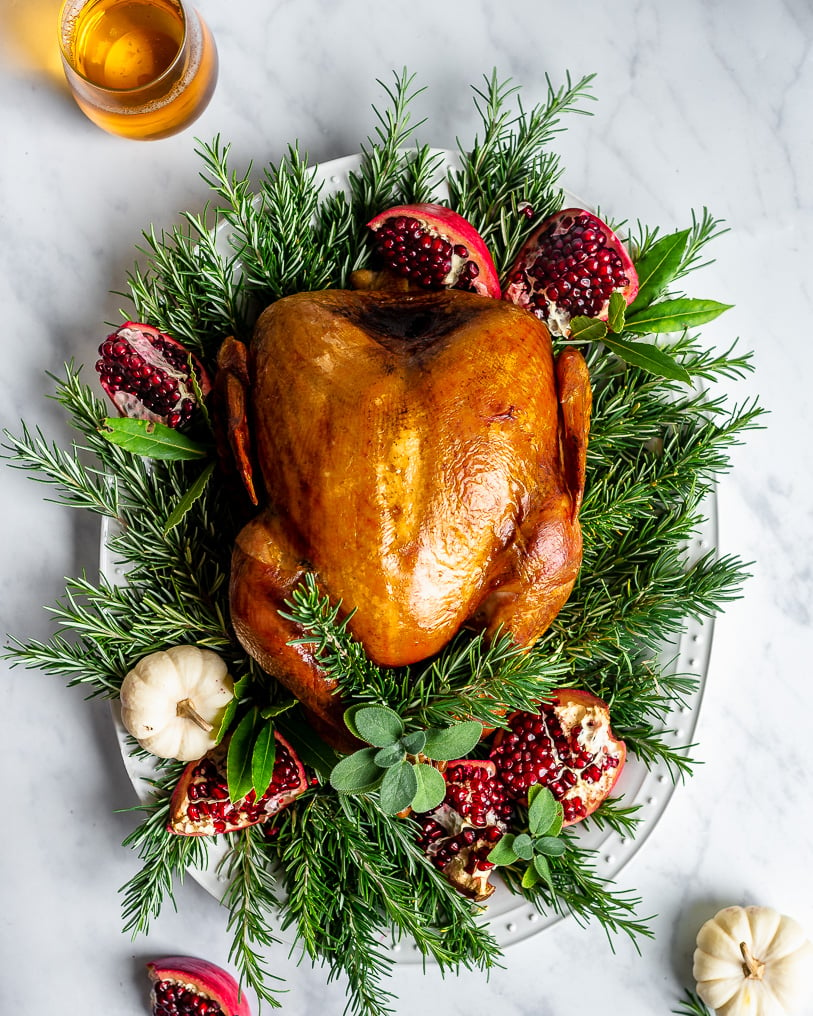
Why roast a turkey overnight?
To slow roast a turkey, you'll bake it in a very slow oven over a period of several hours - typically 8 to 12, depending on the size of the bird. And this long, slow process results in impossibly tender meat that literally falls off the bone, a golden, deep flavor, and crisp brown skin.
Even better, it's a fairly hands-off approach and that means you have more time to spend with friends and family. And you'll have plenty of time to whip up sides, put the final touches on dessert, and set the table.
Timing Your Turkey
Slow-roasting is a simple, easy process that requires little active time in the kitchen. However, because it takes so long for the turkey to cook through, you'll need to carefully plan when you first put it in the oven.
Allow about 6 hours total for a medium-sized bird. If you have a large bird, and plan to eat early in the day, you may need to wake in the wee hours of the morning to get your bird ready on time. Or, if you plan to serve it in the evening, you'll start the bird by noon.
Safety
The recommended temperature for roasting turkey is 325 F; however, slow-roasting poultry was once common practice. And it was a popular way to cook turkey until recently. Many earlier generations grew up roasting their turkeys overnight in the oven.
Most bacteria on your bird will rest on its surface areas, not deep in the meat. Remember the "danger zone" for food-borne illness is 41 to 130 F. So make sure that your turkey comes to 135 F within about 4 hours and 165 F before you serve. In 2008, researchers found that slow-roasted birds were safe to eat (1).
To ensure your bird stays safely within those temperature windows, choosing small to medium birds works best. I recommend using a higher temperature and different techniques for very large birds. This maple-brined turkey recipe works well.
Tips for a perfect bird
- Choose small to medium birds (12 - 16 pounds), as larger birds risk taking too long to come to safe temperatures.
- Stuff your turkey with herbs, lemons, and onions. Herbs, lemons, and onions give your turkey flavor and keep it moist.
- Bake your stuffing on the side instead of in the bird.
- Mind the internal temperature. The internal temperature of your bird should reach 165 F when taken from the thigh for safety.
- It's okay to cook the bird over temperature. The meat will seize and then yield and become even more tender as it cooks, so I typically cook my bird to 180 F.
- Tent the bird with foil if you notice it browning too quickly.
- If you find the turkey cooking too quickly, you can reduce the heat to 225 F.
- Allow it to rest before serving. Your turkey will need to rest for about 40 minutes to stay moist. That's just enough time to warm up your sides in the oven.
- Serve the turkey with plenty of sides like sourdough stuffing, cranberry mandarin relish, maple-glazed root vegetables, and a nice autumn fruit salad.
- Use your leftovers for turkey bone broth and turkey and wild rice soup.
- If your wine and liquid ingredients evaporate in the pan, add more wine, stock, or water.
Variations + Substitutions
Once you've made the basic recipe, you can vary some of the ingredients and flavors. As long as you keep to the basic method and technique, you'll have a delicious bird.
Try a spice rub instead of herb butter. While the herb butter in this recipe is delicious, you can whisk spices together with olive oil and brush use that instead.
Try stuffing the turkey with oranges and spices instead of lemons and onions. Citrus and onions keep the bird moist as it cooks, and oranges make a great swap for lemons.
More Thanksgiving recipes
Common Questions
A turkey needs to cook for about 30 minutes per pound at 250 F, and should reach a safe internal temperature of 165 F before serving. I recommend slow-roasting only small to medium birds.
Turkey is safe to eat when it reaches an internal temperature of 165 F; however, slow-roasted birds may reach internal temperatures as high as 180 F or even 190 F. When cooking turkey past the official safe-to-eat temperature of 165 F, remember that the meat may seize and then become tender.
If you find your turkey cooking too quickly, you can decrease the oven temperature to 225 F.
If you notice that your turkey is browning too quickly, you can tent the bird loosely with foil and continue cooking it until it reaches a safe temperature.
While researchers found that slow-roasted birds that were stuffed were safe (1), I recommend cooking your stuffing separately from the turkey as a precautionary measure when slow-roasting.
Yes. You can slow-roast a brined turkey, and the technique remains the same.
References
- Snyder, O.P., (2008) HAACP and Slow-Roasting Turkeys. Hospitality Institute of Technology and Management.

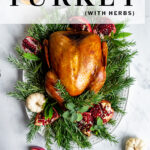

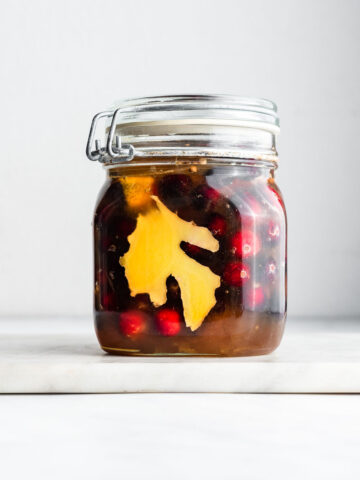

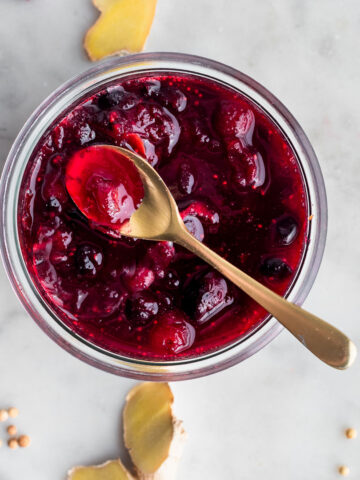
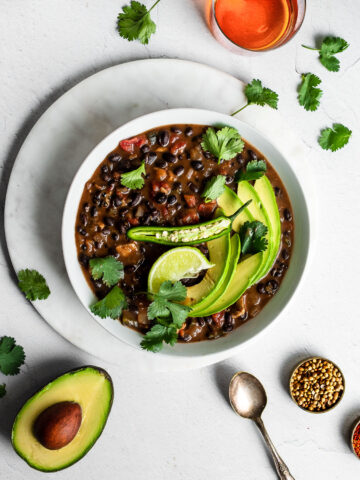
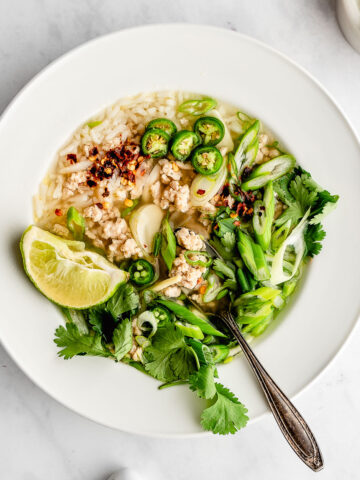
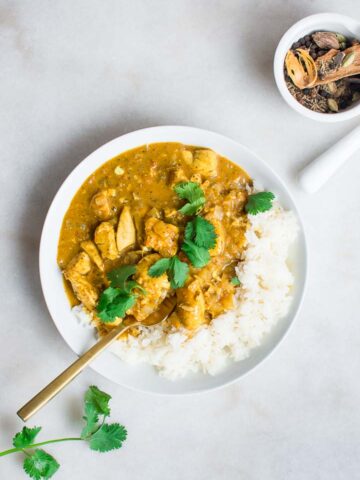
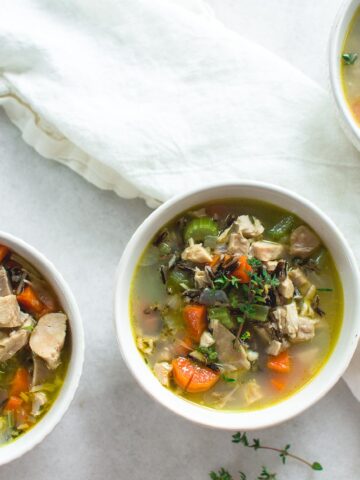
C Brown says
What's a good way to slow cook but then turn it up? And to what and when? I only have 5 hours... Thanks!
Jenny McGruther says
Hi! I recommend making the recipe exactly as written.
LME says
Keeper! Best method and flavor for baking our turkey. Thank you!!
Sara says
Any particular white wine that you recommend?
Jenny McGruther says
We often use pinot grigio.
Zanet says
Best turkey ever! Cooked in a turkey bag...
Patrice Bilenski says
This is the way my grandmothers roasted turkeys - overnight. However, with just me and my husband, I don't need such a big bird. So, how long for a small (10 lb or 12 lb) turkey?
Evan Gamble says
Have slow roasted my turkey for 7 thanksgivings since reading this article, comes out perfect every time. Almost every thanksgiving someone claims its the best turkey they have ever had. I start a wet brine on Monday and let it go for three days, then I prep and put the turkey in the oven Wednesday night. One thing I started doing a couple year ago was starting it at 200, then turning it up for the last 4 hours, so that I can cook for 10 - 12 hours, I feel the longer the better over the years.
Maggie says
Is this cooked breast side up or down? Trying it for the first time but I use this method for Chicken all the time so looking forward to seeing how it turns out with the Turkey.
Amber Beth says
Made this for an early Thanksgiving this year. It was perfect. I think I might try brining it next year.
Jennifer Devitt says
We did this method last thanksgiving and no one ever had better turkey. It is now the family’s only way to make it!!
Taylor says
My family was thrilled with how moist this turkey was! There was worry about the stuffing not being as flavorful cooking separately, but it turned out great too. I will definitely make again might not even wait until next Thanksgiving because the turkey salad was so good with the leftovers.
Shara says
This is an extremely good recipe. I've bookmarked it and will make it again.
Dolly says
My Mom slow roasted turkeys all the years I lived at home so of coarse I always have also and it is the only way to cook Turkey in my opinion…..
Rosanna says
This year was my first time hosting Thanksgiving and it was my duty to cook the turkey for 9 people; needless to say, I was super nervous! With this recipe, however, Thanksgiving was a HUGE success! Everyone said this bird was the best of all time, so I'm glad to have found this recipe.
We had a 15 lbs bird and cooked it for 7 hours. In addition to the onion and lemon in the cavity, we added an apple, fresh rosemary, thyme, and sage to the inside. Turned out tender, flavorful, and delicious. Thank you for this awesome recipe!
Jack says
We tried it with a 14-lb bird this year, and it came out great. The internal temp went closer to 180 (per notes), but it was still super tender and moist.
Lisa matusic says
Would it work ok with a 17 lb turkey?
Jenny McGruther says
Hi Lisa,
I'd recommend following the instructions, the done indications, and extended the cooktime as necessary. It would probably take about an hour to 90 minutes more.
Sonya says
The recipe is good. I've used it a couple of years and my husband likes it.
Filip says
This recipe overcooked my bird of 11 lb to 99.7˚C and I only went with 120 ˚C (250 ˚F) from start.
Kelly says
Did you take internal readings should not have gone over 165 internally. Use an instant thermometer poke it in the thick part I used a digital one. When it gets down to the last hour or two check it every 15 minutes the internal temp will rise fast. Cooking by time is not a good idea it only takes an extra 30-45 min to overcook it in the last hour of cooking. I would check the internal temp every 2 hours when you baste it then after 4 hours more frequently.
Harvey Lemelin says
I've done this recipe twice, this year was my best turkey ever! If you follow the directions you will have a turkey that people talk about for years to come. I wouldn't cook it any other way! Thank you so much!
Chris Engel says
Made this and it’s was the best turkey we ever had. It was fall off the bone delicious! So juicy and tender. This is how turkeys or any poultry should be roasted in our house.
*We brined it 18-24hrs with salt, brown sugar, maple sugar, apple cider and water.
This is a winner!
CMI says
I have to say this is the best turkey recipe I've ever tried. Honestly I never really like turkey that much because it gets so dry. This time it came out incredibly well, I cannot thank you enough for posting this.
One addition I did: I used a dry salt brine by putting salt under the skin of the bird the night before, leaving it sit in the refrigerator to air dry, This works with any poultry, much easier than a wet brine with the whole bird, and it really seems to help.
Lillian Lucash says
I did the same. Best turkey ever. I used an herb and citrus butter as well under and over the skin. Best turkey I ever made.
Gary says
Everyone said this was their best turkey ever.
Neal McLain says
Ok, so I'm just a big ole redneck. Most would, and frequently do, refer to me as a big ole country boy. I say all that to say that not even I could mess this recipe up. I'm a lot bit biased against roasted turkey because it's always dry and not too tender. I even took to frying turkeys every Christmas/ Thanksgiving for the last 10 years. Not real sure why I googled an oven roasted turkey recipe but I did. BOY OH BOY am I glad I did. This right here was UH-MAYZING ha ha. Seriously though, I followed it to a T last Thanksgiving and it was a huge hit. My inlaws demanded I do it again at Christmas. So here I am a few months later (St Patrick's Day) craving it so I searched for it again just to make sure I did it right. I'm so glad I found the exact page again.. Thank you for bringing me back around to a timeless classic, done the right way.
Cat Geer says
Tip - I used my infuser to infuse the herbs into the butter so it will be all set for the Turkey on Wednesday night.
JoAnn says
I just tried this recipe out, getting an early start in practicing with a chicken. It is delicious! My grandmother always cooked her birds overnight. I’m thrilled to be able to do the same now for my family.
M. Becker says
Thank you for sharing your wisdom!
Two Questions:
1. You mentioned the the internal temperature should reach 185F. Do you measure this from the breast or the thigh?
2. What is your opinion about icing the breast so it will cook at the same rate as the thighs?
Christine says
Hi Jenny. I love your site. I have a pastured bird thawing in the fridge and I plan to cook it with your method tomorrow. My bird is only 11 pounds. How many hours would you recommend at the low temperature?? Also, I made your Autumn Fruit Salad to take to a family Thanksgiving dinner yesterday. It was not only gorgeous but also delicious and such a fresh compliment to the meal. I will be making that salad all winter. I did add a big pinch of salt to the dressing.
Ashley Bierman says
Looking forward to using this recipe for our Thanksgiving turkey this week! Sounds delicious!
Karen says
I made this slow-rosted turkey this year and will never cook turkey any other way again. Yes I had to get up a 4am to put it in the oven, ( My sister got up at 3am to take the turkey out of the ref to bring to room temp and pre heat the oven) and agian at 5 to turn the oven down, but the was just planning. It was everything you said it would be, moist, tender, best turkey ever! Thank you for sharing the recipe. Going to try cooking chicken this way too.
Christine L says
Thanks so much for this recipe! We picked up a pastured turkey this year from one of our local farms, and I was wondering how best to cook it. I had originally planned on brining it, but wonder if that's necessary if we use your recipe? Would love your thoughts!
Susan says
This sounds like a great way to cook a turkey, but I have a question: do you leave it breast side up for the entire cooking time? I remember my mother cooking turkeys and she never put anything under the skin. She just cooked the turkey breast side down (it was stuffed with her stuffing), and then turned it breast side up for the last half hour or so of cooking, to crisp the breast skin. The breast meat was always reasonably moist, but I can remember at least one time when the turkey went flying across the kitchen when she tried to turn it…
Christine says
Thanks for this recipe. I followed it for our holiday bird this week. Mine was 12 pounds. I roasted it for 10 1/2 hours at low heat and then blasted the heat for 20 minutes to get a little golden exterior. It was one of the best turkeys I've ever eaten. The breast was moist, the brown meat was succulent. Next time I'll put the onions and herbs on the bottom of the pan to give the gravy more flavor. I think this will be even tastier with a larger bird, like the one you cooked, because more time in the oven will yield a darker fond on the bottom of the pan. Thanks again. We're looking forward to the leftovers.
Mrs. Mac says
Just made this slow roast turkey recipe for the third year ... thank you for sharing the family secret!